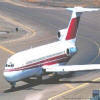|
|
|
Calcium Acetate ---- Calcium Borogluconate ---- Calcium Butyrate ---- Calcium Caprylate ---- Calcium Carbonate ---- Calcium Chloride ---- Calcium Citrate ---- Calcium Disodium EDTA ---- Calcium Dobesilate ---- Calcium Fructoborate ---- Calcium Glubionate ---- Calcium Gluconate ---- Calcium Glycerophosphate ---- Calcium Hydroxide ---- Calcium Lactate ---- Calcium Lactobionate ---- Calcium Levulinate ---- Calcium Magnesium Lactate Gluconate ---- Calcium Nitrate ----Calcium Nitrite ---- Calcium Oxide ---- Calcium Phosphate Monobasic ---- Calcium Phosphate Dibasic ---- Calcium Phosphate Tribasic ---- Calcium Pidolate ---- Calcium Polystyrene Sulfonate ---- Calcium Propionate ---- Calcium Saccharate ---- Calcium Stearate ---- Calcium Sulfate ---- Calcium Undecylanate ---- Copper Cupric Chloride |
|
Calcium Acetate SDS MSDS of Suppliers, Manufacturers & Exporters
Calcium Acetate SDS, Safety Data Sheet Section 1: Chemical Product and Company Identification Product Name & Other Names: Calcium Acetate or Calcium diacetate or Acetic acid, calcium salt. Section 2: Hazards Identification GHS, Globally Harmonized System Classification in accordance with 29 CFR 1910 Not a hazardous substance or mixture according to Regulation (EC) No. 1272/2008. Labeling according GHS & Regulation (EC) No 1272/2008
Signal Word: None Precautionary statements: Section 3: Composition and Information on Ingredients Product Name & Other Names: Calcium Acetate or Calcium diacetate or Acetic acid, calcium salt. Section 4: First Aid Measures Always seek medical advice after the first aid treatment. Skin: Wash exposed area with soap and water. Section 5: Fire and Explosion Data Flammability of the Product: Non-flammable. Section 6: Accidental Release Measures Personal precautions, protective equipment, and emergency procedures: Ventilate area of leak or spill. Avoid breathing dust/fumes/gas/mist/vapors/spray. Use individual protective equipment (waterproof boots, suitable protective clothing, safety glasses, etc.). Restrict unprotected personnel from the area. Prevent any contact with hot surfaces. Do not approach facing the wind. Do not touch the spilled material. Section 7: Handling and Storage Precautions for safe handling: Apply according to good manufacturing and industrial hygiene practices. Ensure proper ventilation. In case of insufficient ventilation, wear suitable respiratory equipment. Wash thoroughly after handling. Do not drink, eat, or smoke while handling. Avoid contact with skin, eyes, and clothing. Minimize dust generation. Avoid breathing dust/fumes/gas/mist/vapors/spray. Avoid contact with eyes, skin, and clothing. Keep container tightly closed. Avoid ingestion and inhalation. Use individual protective equipment (waterproof boots, suitable protective clothing, safety glasses, etc.). Prevent any contact with hot surfaces. Section 8: Exposure Controls/Personal Protection Engineering Controls: Use process enclosures, local exhaust ventilation, or other engineering controls to keep airborne levels below recommended exposure limits. If user operations generate dust, fume, or mist, use ventilation to keep exposure to airborne contaminants below the exposure limit. Section 9: Physical and Chemical Properties Appearance: Hygroscopic white crystals; lumps; powder. Section 10: Stability and Reactivity Data Stability: Stable under ordinary conditions of use and storage. Section 11: Toxicological Information Toxicity to Animals: Section 12: Ecological Information Toxicity to fish: semi-static test LC50 - Oncorhynchus mykiss (rainbow trout) - > 1.000 mg/l - 96 h Section 13: Disposal Considerations Waste Disposal: Waste must be disposed of in accordance with federal, state, and local environmental control regulations. Section 14: Transport Information DOT USA, TDG Canada: Not controlled. Section 15: Other Regulatory Information USA: DISCLAIMER: The information and recommendations set forth herein (hereinafter "Information") are presented in good faith and believed correct as of the date hereof. It is compiled from various sources and it is not necessarily all inclusive nor fully adequate in every circumstance. In addition, these suggestions should not be confused with nor followed in violation of applicable laws, regulations, rules or insurance requirements applicable. This MSDS sheet is intended only as a guide to the appropriate precautionary handling of the material by a properly trained person using this product. Individuals receiving the information must exercise their independent judgment in determining its appropriateness for a particular purpose. |
Crystal Clear Products and the group companies are manufacturing chemicals since several decades. We have automatic vacuum operated titanium evaporators and SS316 equipments to produce top grade of chemical products. We have toll manufacturers and representatives in China, UAE, Europe, Canada & USA and agents & customers in all countries like USA, Canada, Europe, UAE, South Africa, Tanzania, Kenya, Egypt, Nigeria, Uganda, Turkey, Mexico, Brazil, Chile, Argentina, Bangkok Thailand, Kaula Lumpur Malaysia, Dubai UAE etc. & sales representative in Chicago, Houston New York & Los Angeles, USA. Associated units are FDA-GMP certified, Halal and/or Kosher certified, REACH registered, ISO-9001, ISO-22000 HACCP certified, Crisil Rated.
Contact Calcium Acetate BP Ph Eur USP FCC Food Grade manufacturers exporters at:

Crystal Clear Products
Plot No-C1-1031-9, GIDC Estate, Panoli, Ankleshwar, Gujarat - 393002. India
Telephone Mobile: 91-7506449333; e-mail: info@crystalclearproducts.org
e-mail: info@crystalclearproducts.org
Manufacturers, Suppliers of IP BP Ph Eur EP JP USP FCC Food, ACS Reagent Grades of Chemicals like Calcium Acetate




